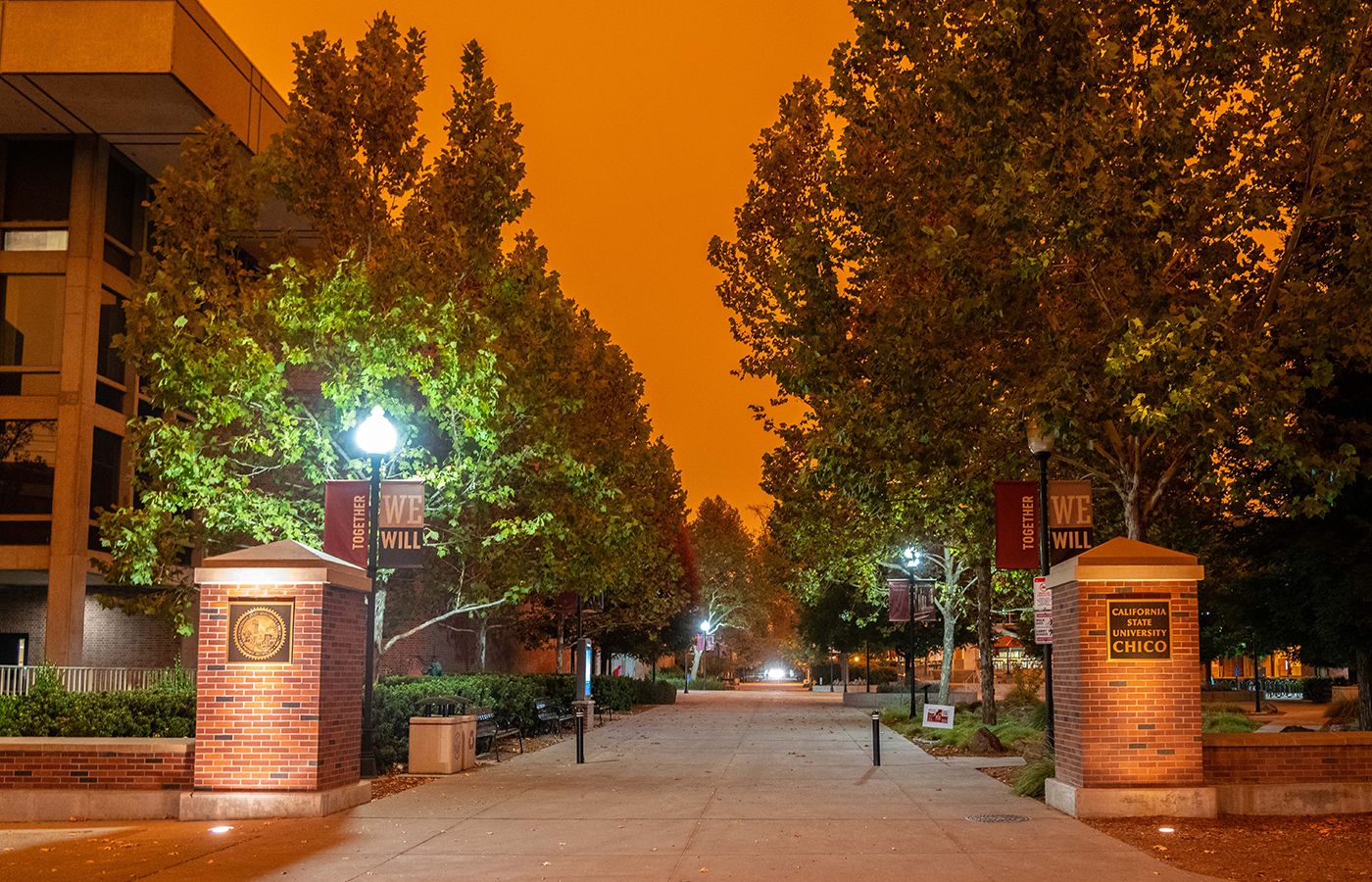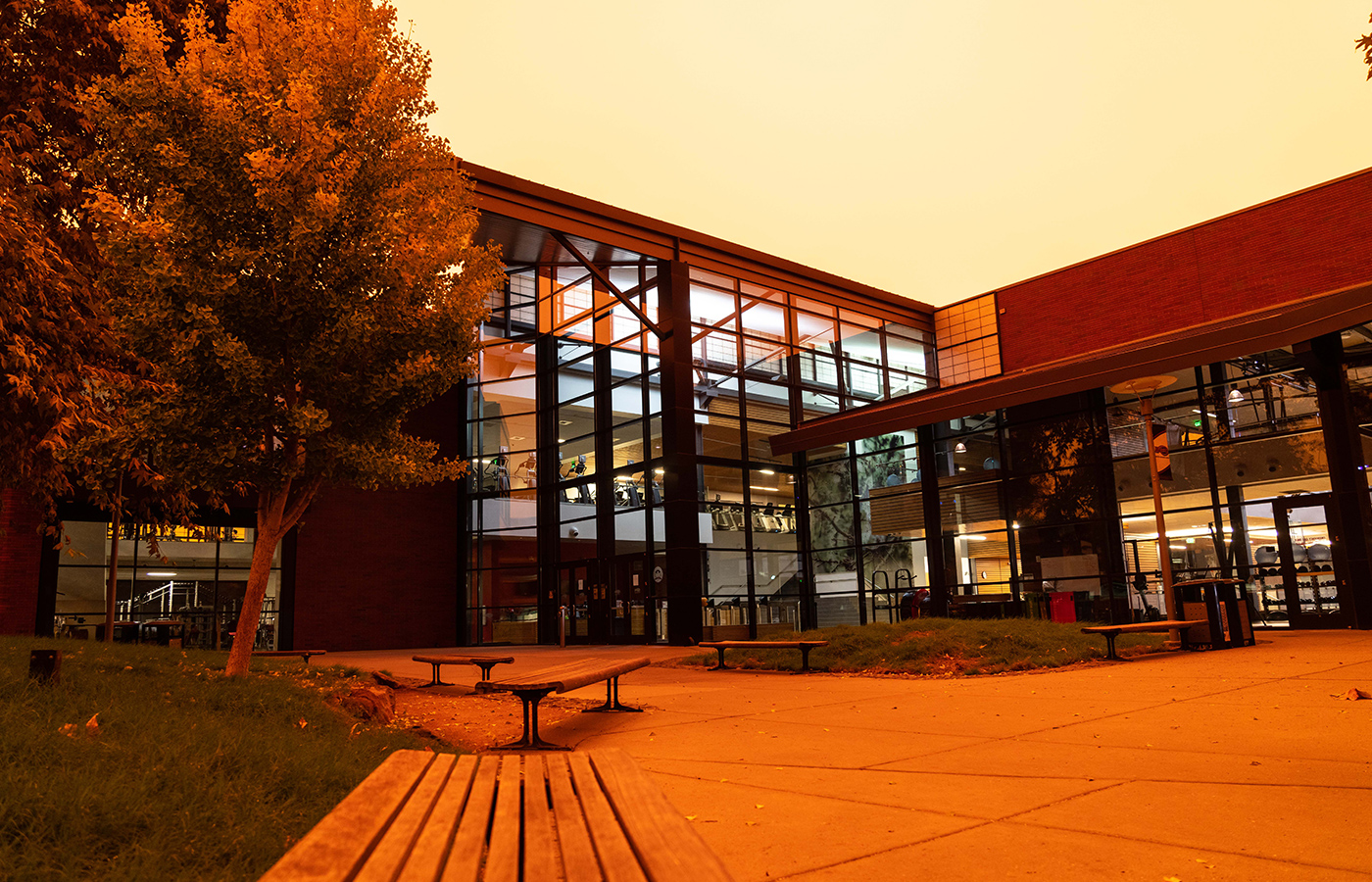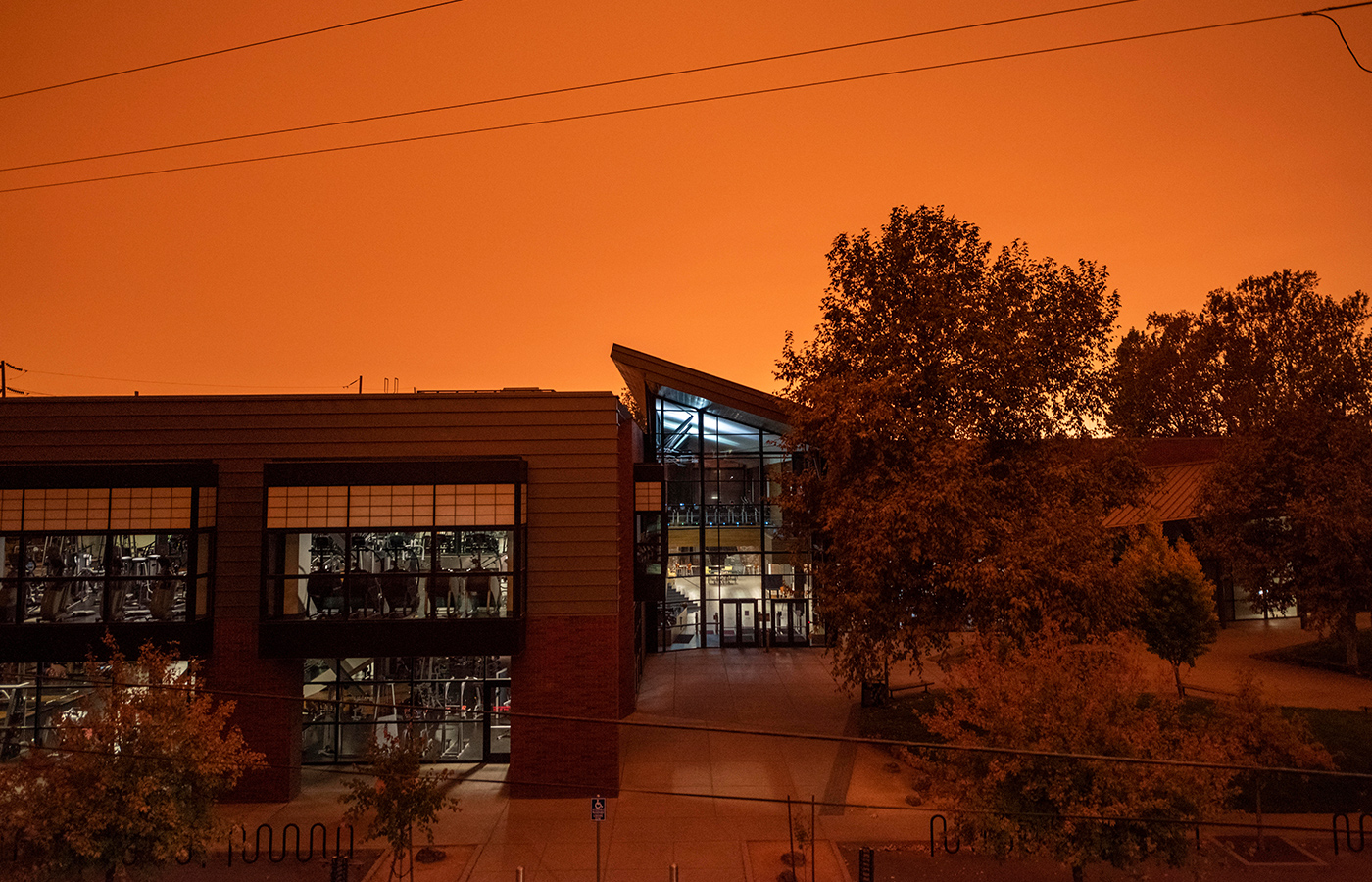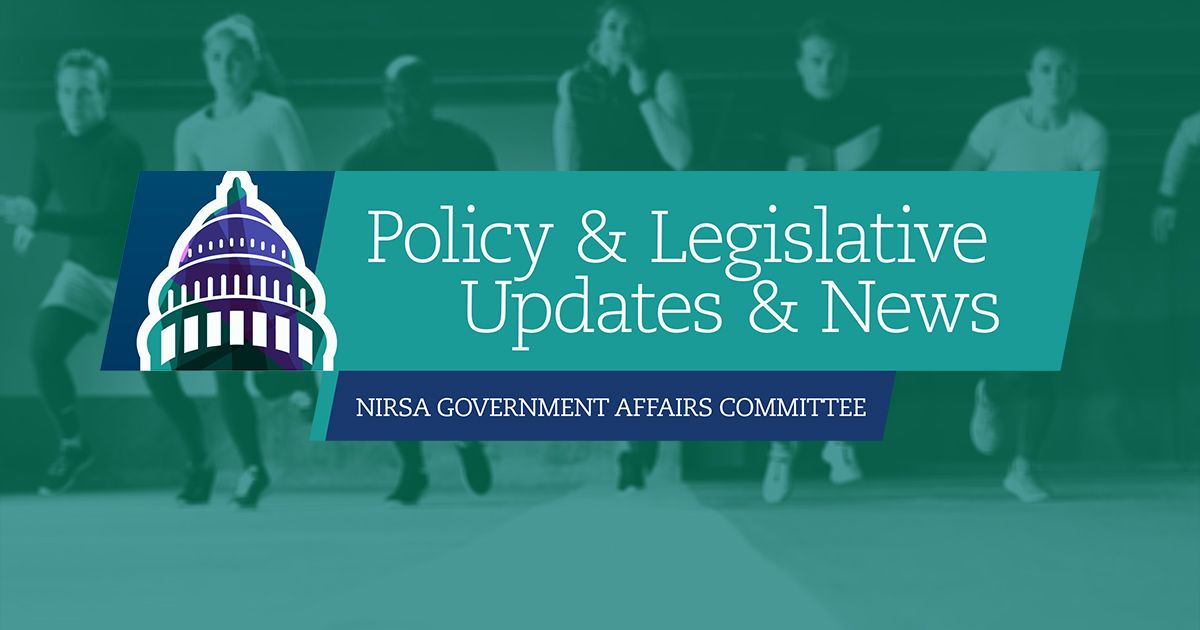It’s impossible to predict what will happen on a campus when a worst-case scenario stops being hypothetical. So much cannot be planned for or anticipated, especially in the face of the unexpected and unprecedented. For California State University, Chico—the closest campus to the deadly Camp Fire that burned 153,000 acres and killed at least 88 people this past November—one thing remains constant during a time of uncertainty: whatever happens, they are in it together.
Curtis D. Sicheneder, Director of the Wildcat Recreation Center (WREC), and Kendall Ross, the Chico State Director of Recreational Sports, have generously shared their experience of navigating the destruction and far-reaching consequences of the Camp Fire and their perspective on the role that collegiate recreation plays in the aftermath of disaster.
Staying flexible
Curtis and Kendall can’t stress enough that flexibility is perhaps the key lesson other NIRSA members can learn from the response and relief efforts at Chico State.“Even with the best planning, there is no straight line in the aftermath of a large-scale emergency,” says Curtis.
Although they always knew the WREC, along with Athletics and other satellite campus recreation facilities, could be used as a place of refuge in case of emergency, no real internal fire emergency plan existed. They knew the campus Emergency Operation Command (EOC) would coordinate with all local EMS authorities in emergency situations and communicate information to the rest of campus, which is what happened during the Camp Fire. As can be expected, there were many changing needs and plans that required everyone on campus to stay flexible with what was expected of them and how they could help. The WREC was asked numerous times to house EMS personnel, though they ultimately only housed a small number of staff for a few days.

Even though they hosted less staff than they expected, Kendall notes that the recreation department’s event logistics skills helped them coordinate security and access for providing for the needs of the EMS personnel.
“Being able to look at the entire situation and determine how our program and/or facilities could help were one of many ways our event management and cross-campus collaboration helped,” she says.
The WREC staff also had to be flexible regarding reopening to the campus community. Although there was the desire to reopen on several occasions, the decision was made to keep the center closed over concerns for safety. The primary concern was air quality, which had reached severe levels outside and there was concern over the ability to control air quality in some internal spaces as well. In addition, there was a small norovirus outbreak in the community where concentrated populations of relocated fire victims had gathered. Ultimately, the decision was made to close the entire campus for a period of more than two weeks due to myriad safety concerns.
“Throughout the campus closure our goal was to reopen as fast as possible to provide a sense of normalcy to students and the opportunity for stress relief through physical activity,” Curtis says.
The WREC was able to reopen on November 26, the closure lasting through the normally scheduled Thanksgiving break. Curtis says rain had helped clear the air by then, and their numbers were typical. “There wasn’t the visual gloom hanging over campus,” he says. “Nevertheless, an ‘aftermath’ feeling permeated campus and there was an unspoken acknowledgement of a negative shared experience.” Even so, he could tell people appreciated being back and having the opportunity to exercise again.
“The WREC’s greatest service to those in need was to be open, available, and allow everyone that was able to return to routine,” he says. In addition to providing a sense of normalcy, the WREC staff was also informed of the various services around campus for students, faculty, and staff affected by the Camp Fire and could direct those in need.
“Throughout this process one thing was clear: communication is key,” says Kendall. “All departments and programs needed to be informed, aware, and efficient in their communication. Sometimes less is more, so being direct and concise when making decisions and giving directions was important.”
Curtis praises the assistance of their student employees in the WREC’s internal communications. “They were amazing during this time,” he says. “They wanted the WREC open as bad as we did and were absolutely key in helping craft skeleton crew schedules and communicating it to their peers. Their use of GroupMe and other forms of social media allowed them to do in minutes what would have previously taken hours.”
Rising to the occasion
When campus reopened, most services were centralized in the Bell Memorial Union including everything from student wellness services to on-site emergency insurance claim agents. The Department of University Communications in coordination with several campus entities created and is still currently managing a comprehensive online resource for the campus community.
An especially moving act of collaboration was demonstrated by the Associated Students Dining. They hosted Al Roker of the Today Show and served a pre-Thanksgiving Day meal to local fire fighters and EMS professionals who lost their homes in the fire while fighting the fire. The very next day on Thanksgiving, they hosted the World Central Kitchen, a non-profit run by Jose Andres, that serves food to people in post-disaster situations.
“Along with Tyler Florence and Guy Fieri, the World Central Kitchen and AS Dining prepared 15,000 Thanksgiving meals and smoked over 7,000 pounds of turkey for fire victims,” says Curtis. “Remaining food from this effort was delivered to first responder camps and local shelters.”
Of course the NIRSA family can also be counted on to rally in times of trouble.

“We received emails and phone calls from other campus rec programs asking how to help and were able to send people to areas that needed resources,” says Kendall. “Of course, financial donations continue to be needed and appreciated. No amount is too small.” There are a number of causes to choose from for those affected by the Camp Fire including animal shelters, community funds, and disaster relief efforts. This is a wonderful time to adopt a new pet, either from a rescue or shelter in the Camp Fire area or from a local shelter. The more animals that are adopted, the more spaces there will be to relocate Camp Fire animals and increase the odds of their adoption.
Navigating the unexpected
There are many lessons Curtis hopes other NIRSA members can learn from the response and relief efforts of Chico State.
Because of the information overload in time of disaster, he recommends making a point to get in the same room with, or individually call, key staff both above and below on the organizational chart “to provide both knowledge and a solidified team approach.”
“Local news, national news, social media, campus, your supervisors are all pushing information at you at the same time,” he says. “There can become a point that you are unsure what news is most current and most accurate.”
Many Chico State staff had to leave town due to the debilitating smoke. Curtis emphasizes sensitivity when having to talk to staff about work when they are out of town, since it is possible that they lost their home or a family member. They also had to consider logistics like if the staff members were hourly or exempt, what it means for payroll if they are called about work, and what to do when payroll came due during the campus closure. Thankfully, their IT department was able to create an off-campus log-in system to certify payroll.
Another huge concern is the short and long-term impacts of housing. Curtis says, “With 20,000 Paradise residents relocated to Chico and the surrounding areas, the housing market has skyrocketed.” In the short term this negatively impacts the students, faculty, and staff that lost their homes as finding alternative housing becomes even more difficult and perhaps a financial impossibility. Many questions still linger as to what will happen when current dormitory residents look for off-campus housing. There is no guarantee there will be any, and if there is, there is a high likelihood it will be unaffordable. Campus is counseling students on how to approach their leases that end this coming summer and trying to anticipate how the housing market will affect recruitment for full-time positions at Chico State.
“Campus can make a job offer but will that individual be able to afford to relocate to Chico?” asks Curtis. “While centrally located near some of the most beautiful areas of California, Chico has a somewhat rural location, already making recruitment somewhat challenging as it’s a commitment to move here rather then how in other larger California communities where individuals can change jobs without necessarily having to change where they live. Until the market levels off at some point in the future, this puts an emphasis on the campus trying to ‘grow its own’ professionally and develop its current full-time talent on campus.”
Building the future
As Curtis points out, recreation services are uniquely positioned to be a key hub of resources and support for students’ and broader campus community’s wellbeing in a post-disaster environment.

“Recreation facilities already serve the health and wellness needs of students, making reopening quickly after disaster a key priority,” he says. “The size of recreation facilities, combined with ongoing partnerships with campus departments such as counseling, wellness, nutrition, etc., make recreation centers an excellent location for either centralized or satellite services in an emergency aftermath. Be sure your campus’s EOC knows what your facilities and teams are capable of and, if possible, have a representative sit on the EOC.”
Since the Chico State Associated Students is responsible for two of the largest buildings on campus best suited for emergency relief, the WREC and the Bell Memorial Union, Curtis is confident that the campus EOC is aware of the important role that these buildings and the Associated Students can play in time of emergency.
Though the story of Chico State and the survivors of the Camp Fire is far from over, and there is a lot of recovery work left to do, recreation is poised to lead the rebuilding of a sense of normalcy and to encourage the wellbeing of their community.
Integrated approaches to wellbeing
Whether in the face of fire, flood, tornado, hurricane, or other natural and even sometimes manmade disasters, campus recreation departments are stepping forward as pivotal players on college and university campuses across North America. By regularly managing large programs, operating large and sophisticated facilities, and developing the leadership skills of student employees, campus recreation professionals bring valued competencies to the table when it comes to the pursuit of innovating, supporting, and fostering a holistic, integrated, and strategic approaches to wellbeing at the institutional level.
Check out the recent statement Health and Wellbeing in Higher Education: A Commitment to Student Success, endorsed by NIRSA and seven other leading higher education associations, to see how NIRSA members are transcending reactive, siloed, programmatic approach to health and establishing foundational, proactive wellbeing initiatives for the campus community.
- For more information, contact the Director of the Wildcat Recreation Center, Curtis D. Sicheneder.
- If you are interested in highlighting your campus or a NIRSA member’s achievements on your campus, pitch us your ideas.
Sarah Kosch is a Communications Specialist at NIRSA.








